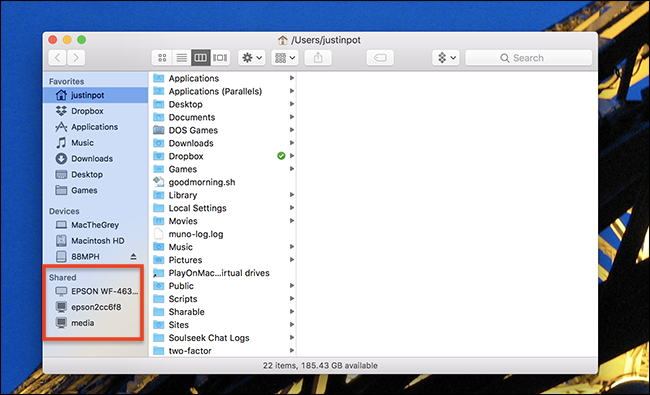You’re setting up a Mac firewall, or just checking what’s running using Activity Monitor, when you notice something cryptic is running: mDNSResponder. What is this process, and should you be worried? No: this is a core part of macOS.
What Is mDNSResponder?
Today’s process, mDNSResponder, is a core part of the Bonjour protocol. Bonjour is Apple’s zero-configuration networking service, which basically means it’s how Apple devices find each other on a network. Our process, mDNSResponder, regularly scans your local network looking for other Bonjour-enabled devices.
Why look for other devices? To make networking simple. One example of this working is iTunes’ library sharing. Open iTunes and you can see and browse other iTunes libraries over your local network. Bonjour is the reason this works: the protocol allows two computers on the same network to easily find each other, meaning the list of shared iTunes libraries is always up-to-date.

Bonjour enables more than just iTunes’ sharing—it helps populate the list of “Shared” devices in Finder. Bonjour also populates the picture sharing in Photos, the list of Airplay-compatible devices, and quickly finding printers. Because the same process runs on Windows, Bonjour can also be used to quickly connect to Windows computers running software like iTunes—this is how sharing iTunes libraries between PCs and Macs works.
Third party software can also use Bonjour: for example, you can stream audio from iTunes to Kodi, even if you’re running Kodi on Windows, if you have Bonjour installed. A simple program called Bonjour Browser allows you to quickly browse all of the Bonjour-enabled devices on your network.
If you use a Mac firewall, you’re going to see popups about mDNSResponder. Blocking this process from accessing the network prevents Bonjour from working, which makes it harder to use your local network. In some circumstances, disabling Bonjour may prevent you from connecting to the Internet altogether, so it’s probably best to just allow mDNSResponder to access your network.
From the most part, you shouldn’t notice mDNSResponder taking up a lot of CPU or memory. If you do, restarting your Mac should solve the problem in most cases.
Wait, Didn’t Apple Remove mDNSResponder?
You might think that Apple removed mDNSResponder from macOS years ago, and you’re sort of correct. According to Ars Technica, Apple briefly ditched mDNSResponder for Yosemite in 2014, only to discover that a lot of things break without it. Apple brought back mDNSResponder a year later for El Capitan, which apparently fixed 300 different macOS bugs in one swift motion. This makes us suspect that mDNSResponder won’t be disappearing from macOS again any time soon.
Hi! I am a robot. I just upvoted you! I found similar content that readers might be interested in:
http://trick5.com/2018/01/12/trick5-what-is-mdnsresponder-and-why-is-it-running-on-my-mac-trick5/
Downvoting a post can decrease pending rewards and make it less visible. Common reasons:
Submit